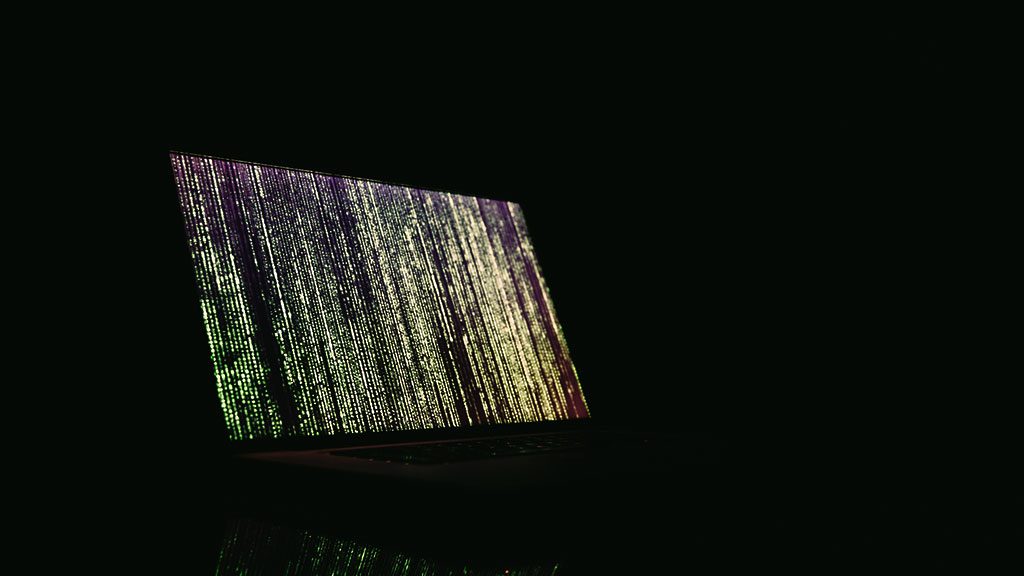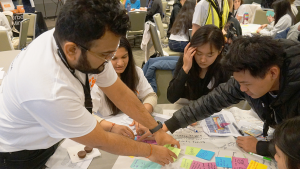A three-dimensional virtual model of central Vancouver, called Virtual Vancouver, is enabling a local architectural firm to see how the buildings it designs will fit in with its built neighbours.
“Virtual Vancouver gives architects a chance to show the scale of the building from the street, as well as the character and quality of the building in context with the surrounding buildings,” said Bruce Haden, principal of Human Studio Architecture and Urban Design Ltd.
“Virtual Vancouver enables us to design better buildings. And it allows us to have a fuller and more complete conversation with the public, because we can show the building in detail, from any angle and perspective, so people can see how the building might affect them.”
Human Studio is currently working on two building projects in Vancouver’s Gastown district.
On one of them, Virtual Vancouver, enabled Human Studio to make realistic — and convincing — presentations to two City of Vancouver design panels for their approval.
“It was a big help to both us,” said Haden. “It enabled us, the architects, to make our case for the project. And the design panels were able to examine a detailed 3-D model of what the completed structure would look like, and see how it fit in with the other buildings.”
Virtual Vancouver was created by Vancouver-based GeoSim Cities Inc.
Chris Wiesinger, CEO of GeoSim, says Virtual Vancouver is a high-precision, high-resolution 3-D model that covers over 15 square kilometres of central Vancouver.
You’ll be able to walk through a building, look around and see what it looks like
— Michael Geller
Vancouver Architect and Developer
“Virtual Vancouver covers downtown Vancouver, the Olympic Village area on the south side of False Creek and Granville Island,” said Wiesinger. “We’re starting to work on extending beyond these boundaries to complete the whole city.”
To create Virtual Vancouver, data is collected from air and ground and fed into a production pipeline, where it creates detailed models of up to five to 10 centimetres of absolute spatial precision, one to two centimetres of relative precision and one centimetre of visual resolution.
“Virtual Vancouver is a video game-like 3-D virtual world,” said Wiesinger.
“It gives architects, design professionals, developers — and the stakeholders in the municipal bureaucracy and neighbourhood NGOs that they have to deal with — a realistic representation of the urban context, which are the other buildings in the neighbourhood, in which a proposed project is to be built.”
Thanks to its level of precision and resolution, Virtual Vancouver provides important detailed information, Wiesinger says.
“3-D city modelling saves time, money and headaches,” he said.
“It speeds up the approval process by reducing the risk that individuals or groups can misunderstand a proposal.”
Wiesinger says Virtual Vancouver will enable the city to evolve as it needs to.
“We are living in complicated times,” he said. “We’re bombarded with information. The amount of information that is produced and disbursed doubles every 18 months.
“As a result, action can sometimes be paralyzed if it’s hard for citizens to distinguish fact from fiction.
“I believe that, within the next five years, cities that want to achieve the combination of increased density, equity, livability and sustainability will have to use technology like Virtual Vancouver to build and maintain the social license needed to innovate the built environment at the speed and intensity required to remain competitive.”
Vancouver construction industry consultant Helen Goodland says the software industry has caught up quickly with being able to digitally represent urban landscapes and the large and complicated structures the construction industry builds in them.
“Western Europe is very advanced in that regard,” said Goodland. “A few examples are Future City Glasgow, Amsterdam Smart City, Stockholm Smart City and Copenhagen Smart City.”
Vancouver architect and developer Michael Geller says the next iteration of 3-D modelling is virtual reality (VR) glasses.
“You’ll be able to walk through a building, look around and see what it looks like,” said Geller. “But they still won’t replace 3-D physical models.”
Vancouver-based AB Scale Models, which was founded by Ming Yang and Sharon Xie in 1991, builds 3-D physical models.
“The large models are used by developers for marketing,” said Alex Yang, the son of the founders. “The smaller ones are required by some cities in the Lower Mainland for design advisory panel reviews or for rezoning applications.”
AB Scale Models employs a staff of 50 specialists engaged in a complex, multi-part production process to produce the models, most of which are made of wood or plexiglass.
And just like virtual models, 3-D physical models are changing, too.
“The latest thing is amenity dollhouses, which are used for marketing purposes,” said Yang. “They have tiny, detailed features. The market for them is growing quickly.”




Recent Comments
comments for this post are closed